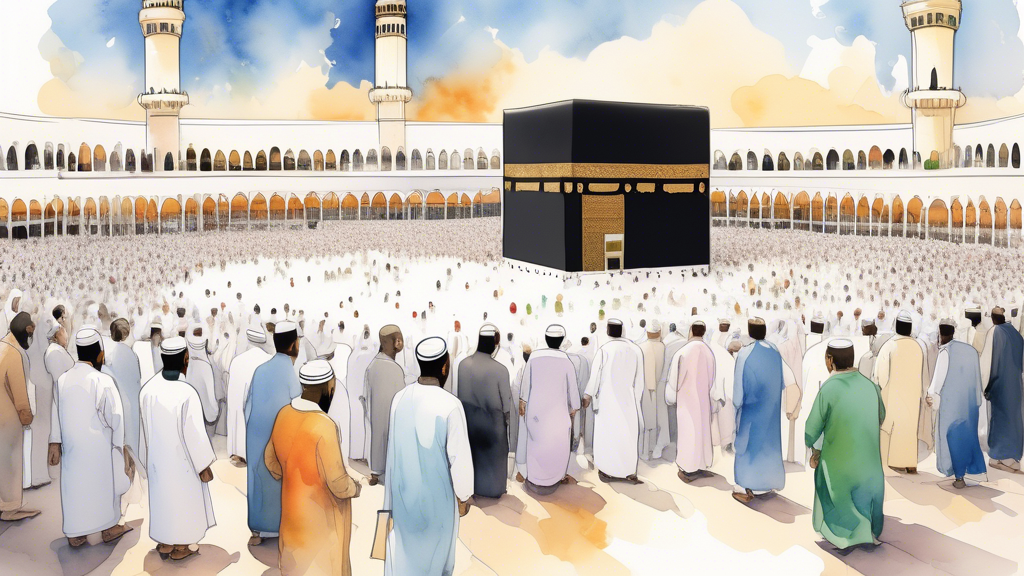Understanding Umrah
Umrah, often referred to as the lesser pilgrimage, is an Islamic ritual performed by Muslims any time of the year, unlike Hajj which has specific dates according to the Islamic lunar calendar. Located in Mecca, Saudi Arabia, it is a highly spiritual journey that involves various rituals meant to cleanse the soul and bring the pilgrim closer to Allah. While not compulsory as Hajj, performing Umrah is highly recommended in Islam and can be undertaken at any point in a Muslim’s life.
Preparing for Umrah
Legal and Travel Requirements
Before embarking on your spiritual journey, it is essential to ensure all travel and legal documents are in order. This includes obtaining a visa from the Saudi embassy, facilitated through an approved Umrah travel agency. Additionally, vaccinations are required, especially for illnesses such as meningitis and seasonal flu — proof of vaccination is mandatory for visa application.
Financial and Lodging Arrangements
Plan your budget inclusively, taking into account travel expenses, accommodation, food, and other necessities. Book your flights and hotels well in advance to avoid inflated prices and secure the best deals.
Spiritual and Mental Preparation
Prepare yourself spiritually by seeking forgiveness from Allah and making intentions (niyyah) for your journey. Additionally, it is beneficial to learn about the rituals of Umrah through reliable Islamic resources. Mental preparation is also crucial as performing Umrah can be physically demanding.
Performing the Rituals of Umrah
Ihram: The Sacred State
Upon reaching the Miqat (the designated point around Mecca), pilgrims must enter into a state of Ihram. Men don unstitched white garments, symbolizing purity and unity among all pilgrims, regardless of social status. Women maintain their usual dress but should ensure it adheres to the Islamic code of modesty. After wearing the Ihram, pilgrims pronounce their intention (niyyah) for Umrah and recite the Talbiyah, a declaration of obedience to Allah.
Tawaf: Circumambulation of the Kaaba
Upon arriving in Masjid al-Haram in Mecca, pilgrims perform Tawaf, which involves walking seven times around the Kaaba in a counterclockwise direction. This act is to symbolize the idea that our lives should revolve around thoughts and actions pleasing to Allah.
Sa’i: Walking Between Safa and Marwah
Following the Tawaf, pilgrims perform Sa’i, walking or running seven times between the hills of Safa and Marwah. This act commemorates Hagar’s frantic search for water for her son Ismael and is a reminder of the human quest for survival, dependence, and faith in God’s provision.
Hair Cutting or Shaving
To complete the Umrah, male pilgrims shave their heads or trim their hair; women generally cut a small portion of their hair. This act signifies a renewal of state and freedom from worldly vanity.
Concluding the Umrah
After completing all rituals, pilgrims are encouraged to pray two Rakat behind Maqam Ibrahim if possible and drink Zamzam water, symbolizing a refreshment of faith. Pilgrims can now exit the state of Ihram and are free to return to their normal activities.
Tips for a Successful Umrah
Wear comfortable shoes as you will walk a lot during the rituals. Stay hydrated, especially during Tawaf and Sa’i. Be patient and understanding, as there will be thousands of pilgrims. Finally, keep your focus on the spiritual aspect of the journey, seeking closeness to Allah.
Performing Umrah can be a transformative experience, offering a chance to reset spiritually and seek forgiveness. By following these steps and maintaining an open heart and mind, you can fulfill your spiritual journey with peace and serenity.
